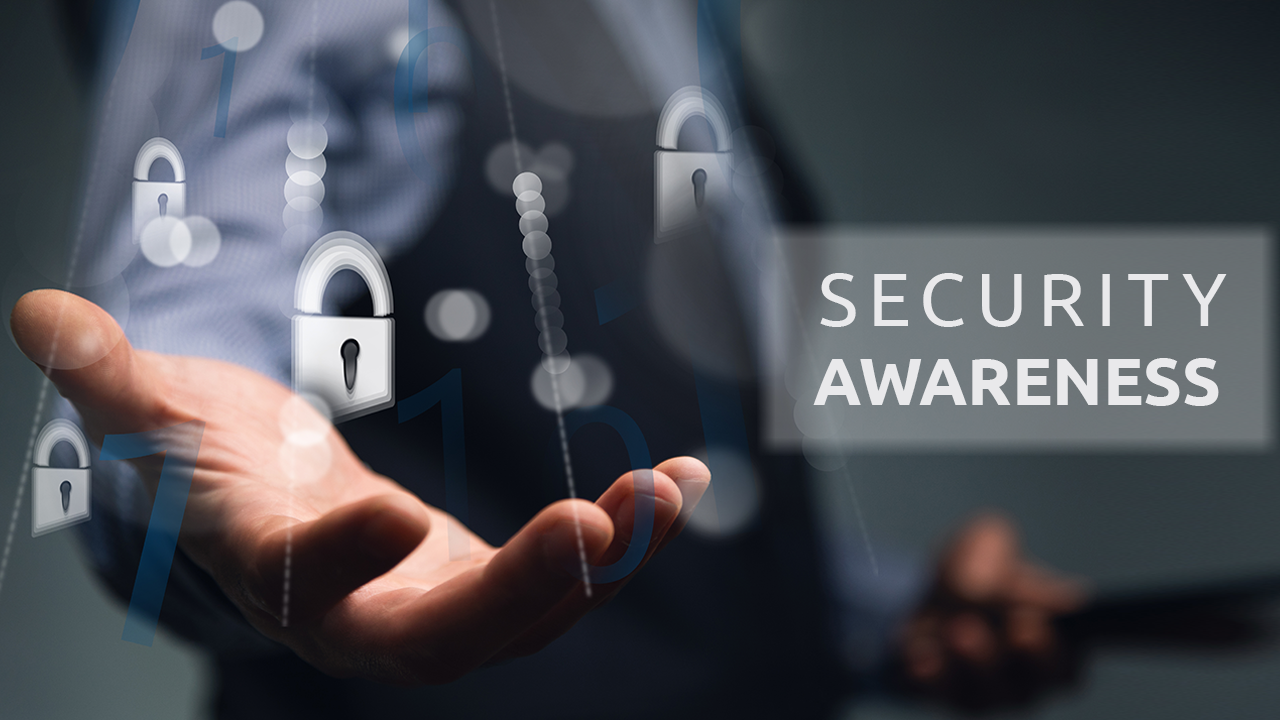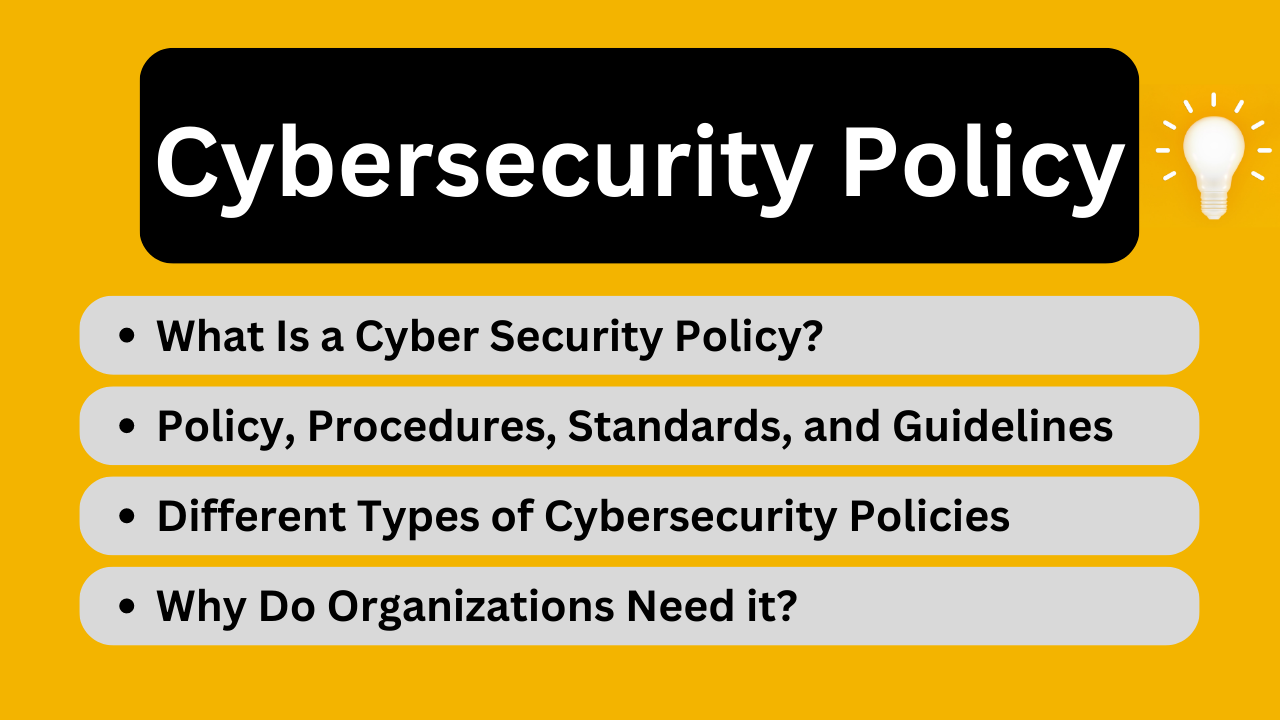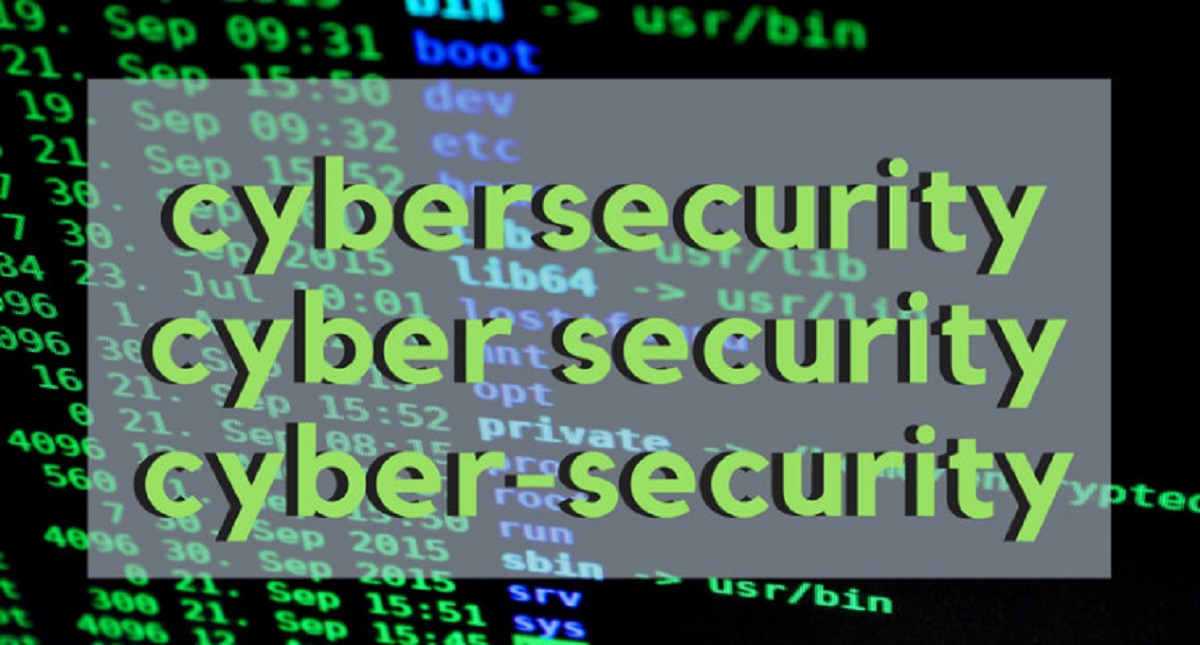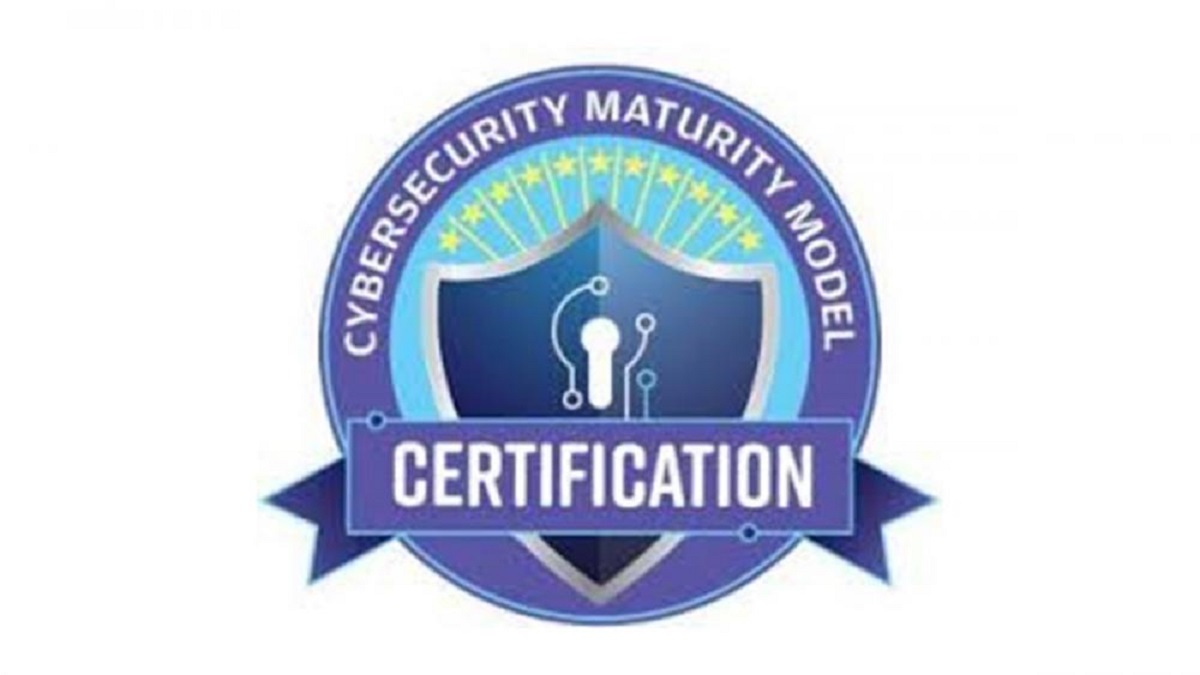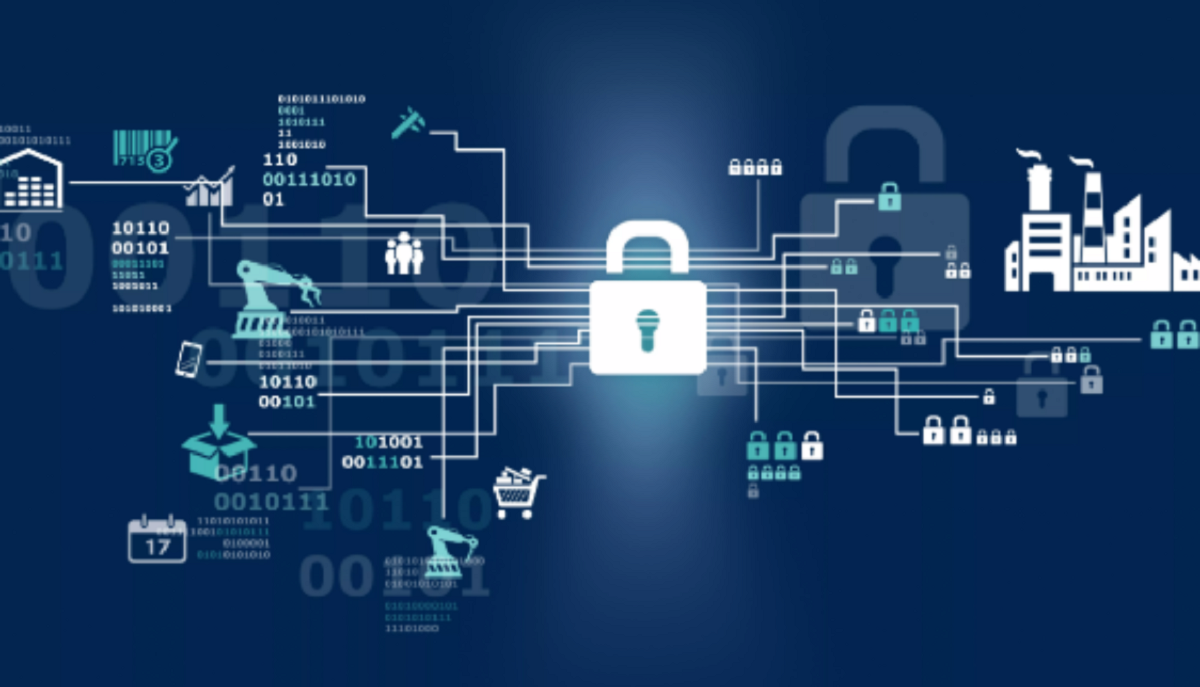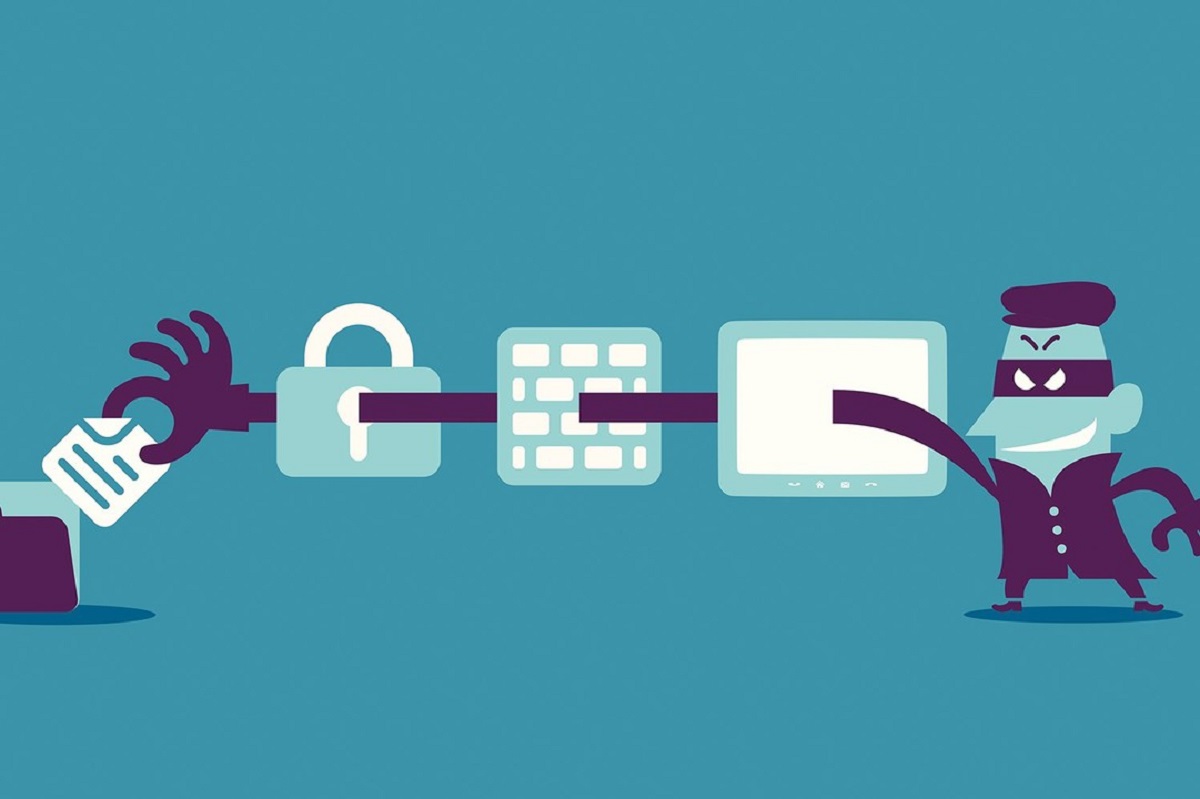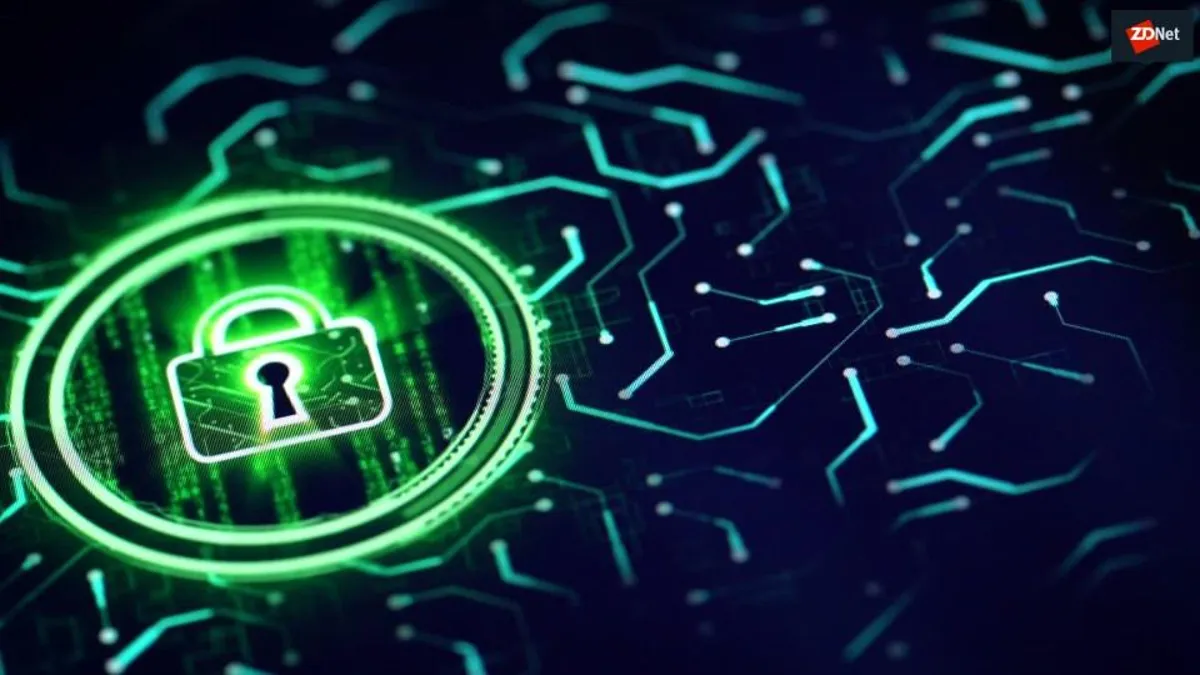Introduction
Cybersecurity has become a critical concern in today’s digital world. With the increasing reliance on technology and the widespread use of the internet, the risk of cyber threats and attacks has grown exponentially. Cybersecurity awareness refers to the understanding and knowledge of potential online threats and the proactive measures individuals can take to protect themselves and their sensitive information.
In recent years, there has been a significant rise in cybercrimes such as data breaches, identity theft, phishing scams, and malware attacks. These attacks can have devastating consequences for individuals, businesses, and even nations. Therefore, raising awareness about cybersecurity is of utmost importance to safeguard personal information, sensitive data, and privacy. It is crucial for individuals to stay informed about the latest threats, best practices for online safety, and effective strategies to defense against cyber attacks.
Cybersecurity awareness goes beyond simply implementing security measures; it involves educating individuals about the potential risks they may encounter online and providing them with the necessary knowledge to make informed decisions. By understanding the various tactics used by cybercriminals, individuals can enhance their ability to identify and mitigate potential threats.
This article delves into the importance of cybersecurity awareness and highlights several key areas where individuals can take proactive steps to protect themselves and their digital assets. By implementing these practices, anyone can significantly reduce their risk of falling victim to cybercrime.
What is Cybersecurity Awareness?
Cybersecurity awareness encompasses the knowledge, understanding, and practices related to protecting oneself and digital assets from various cyber threats. It involves being familiar with the potential risks and vulnerabilities that exist in the digital realm and taking proactive measures to mitigate those risks.
Effective cybersecurity awareness involves staying informed about the latest online threats, understanding common attack vectors, and being aware of the best practices for online safety. It means being vigilant and cautious in one’s online activities and being able to recognize and respond to suspicious behavior or potential threats.
Being cybersecurity aware includes understanding the importance of strong passwords, using two-factor authentication, regularly updating software and devices, and being cautious when sharing personal information online. It also entails being aware of common tactics used in cyber attacks, such as phishing scams and social engineering, and knowing how to avoid falling victim to them.
Furthermore, cybersecurity awareness extends beyond individual responsibility. It involves understanding the role of organizations, businesses, and governments in protecting against cyber threats. It emphasizes the need for strong security measures, employee training, and policies that prioritize cybersecurity.
Overall, cybersecurity awareness is not a one-time endeavor but a continuous effort. As the digital landscape continues to evolve, new threats and vulnerabilities emerge. Therefore, individuals must remain updated and adaptive to the changing cybersecurity landscape to ensure their personal information, digital assets, and privacy are protected.
The Importance of Cybersecurity Awareness
In today’s digital age, the importance of cybersecurity awareness cannot be overstated. Here are several key reasons why cybersecurity awareness is crucial:
1. Protection of Personal Information: Cybercriminals are constantly seeking ways to obtain personal information, such as social security numbers, credit card details, and login credentials. By being cybersecurity aware, individuals can take proactive measures to protect their personal information and prevent identity theft.
2. Prevention of Phishing Scams: Phishing scams involve tricking individuals into revealing sensitive information by posing as a trustworthy entity. Through cybersecurity awareness, individuals can learn to identify red flags and avoid falling victim to these deceptive tactics.
3. Understanding Social Engineering Tactics: Social engineering is the art of manipulating individuals into divulging confidential information. By being aware of various social engineering tactics, such as baiting, pretexting, or tailgating, individuals can better protect themselves from such manipulative attacks.
4. Securing Home Networks: With the rise of IoT devices, home networks are becoming increasingly vulnerable to cyber attacks. By being cybersecurity aware, individuals can implement proper security measures, such as using strong passwords, enabling firewalls, and regularly updating firmware, to protect their home networks.
5. Educating Children about Online Safety: Children are often the most vulnerable targets for cyber predators. Cybersecurity awareness allows parents and educators to teach children about online safety, including the dangers of sharing personal information, interacting with strangers online, and engaging in risky online behaviors.
6. Staying Safe on Social Media: Social media platforms are fertile ground for cyber attacks, privacy breaches, and identity theft. By being cybersecurity aware, individuals can take precautions to protect their privacy, manage their online reputation, and avoid falling victim to social media scams.
7. Recognizing and Reporting Cyber Threats: Being cybersecurity aware enables individuals to recognize potential cyber threats and take appropriate actions. This includes reporting suspicious emails or websites, notifying the relevant authorities, and helping to mitigate the impact of cyber attacks.
8. Safeguarding Business and National Security: Strong cybersecurity awareness is crucial for organizations and governments to prevent data breaches, intellectual property theft, and cyber espionage. It helps protect sensitive information and infrastructure, ensuring the continuity and security of business operations and national security.
By promoting cybersecurity awareness, individuals contribute to building a safer digital environment for themselves and others. It empowers individuals to better protect their digital assets, reduce the risk of financial losses or reputational damage, and safeguard their privacy in our increasingly interconnected world.
Protecting Personal Information
Protecting personal information is a crucial aspect of cybersecurity awareness. In today’s interconnected world, personal data is highly sought after by cybercriminals. Here are some key practices to protect personal information:
1. Use Strong, Unique Passwords: Creating strong, unique passwords for each online account is essential. A strong password should be a mix of uppercase and lowercase letters, numbers, and special characters. Avoid using easily guessable information such as birthdays or common words.
2. Enable Two-Factor Authentication: Two-factor authentication adds an extra layer of security by requiring an additional verification step, usually through a text message or an authentication app. Enable two-factor authentication for critical accounts to prevent unauthorized access even if the password is compromised.
3. Regularly Update Software and Devices: Keeping software, applications, and devices up to date with the latest security patches is vital. This ensures that vulnerabilities are patched, reducing the risk of exploitation by cybercriminals.
4. Be Cautious with Personal Information Sharing: Be mindful of sharing personal information online and only provide it when necessary. Limit the amount of personally identifiable information shared on social media platforms and be aware of who can access this information.
5. Secure Network Connections: When accessing the internet on public Wi-Fi networks, be cautious about sharing sensitive information as these networks are often unsecured. Use a virtual private network (VPN) to encrypt data and ensure a secure connection.
6. Regularly Monitor Financial and Online Accounts: Keep a close eye on financial and online accounts, checking for any unauthorized transactions or suspicious activities. Report any discrepancies immediately to the relevant institutions or service providers.
7. Be Wary of Suspicious Emails and Links: Phishing emails are a common tactic used by cybercriminals to steal personal information. Be cautious of emails from unknown senders or emails that request personal or financial information. Avoid clicking on suspicious links and verify the legitimacy of websites before entering any sensitive information.
8. Securely Dispose of Personal Information: When disposing of documents containing personal information, ensure they are shredded or securely erased. This prevents identity thieves from retrieving sensitive data from discarded documents.
9. Backup Important Data: Regularly backup important files and data to an external hard drive or cloud storage. This safeguards personal information in case of device theft, loss, or a ransomware attack.
By implementing these practices, individuals can significantly reduce the risk of their personal information falling into the wrong hands. Protecting personal information is a key component of cybersecurity awareness and crucial for maintaining online privacy and security.
Avoiding Phishing Scams
Phishing scams are a prevalent form of cyber attack that aim to trick individuals into revealing sensitive information, such as login credentials, credit card details, or social security numbers. Falling victim to a phishing scam can lead to financial loss, identity theft, and other serious consequences. Here are some key practices to avoid phishing scams:
1. Be Skeptical of Unsolicited Emails: Exercise caution when receiving emails from unknown senders, especially if they contain urgent requests for personal information. Phishing emails often try to create a sense of urgency or fear to prompt individuals into taking immediate action.
2. Verify the Source: Before clicking on any links or attachments in an email, carefully verify the source. Hover over the links to see the actual URL and make sure it matches the company or organization it claims to be from. If in doubt, contact the company directly through their official website or phone number.
3. Watch Out for Misspellings and Grammatical Errors: Phishing emails often contain spelling mistakes, grammatical errors, or awkward phrasing. Legitimate organizations typically have professional communications and are unlikely to have such errors.
4. Be Cautious with Personal Information Requests: Be wary of emails or websites that prompt you to provide personal information, especially sensitive data like passwords, social security numbers, or financial details. Legitimate companies generally do not request this information via email.
5. Be Mindful of Fake Websites: Cybercriminals often create fake websites that closely resemble legitimate ones to deceive users. Check for the secure lock icon in the address bar (https://) and ensure that the website URL matches the official one. Avoid entering personal information on websites that are not secure or do not seem trustworthy.
6. Use Anti-Phishing Tools: Many web browsers and security software offer anti-phishing features that can help detect and block phishing attempts. Enable and update these tools to add an extra layer of protection against phishing scams.
7. Educate Yourself: Stay informed about the latest phishing techniques by regularly reading about phishing trends and new scams. Understanding how phishing attacks work can help you recognize and avoid potential scams.
8. Report Suspicious Emails: If you receive a phishing email, report it to your email provider or the organization it claims to be from. This can help them take action to prevent others from falling victim to the same scam.
By following these practices, individuals can significantly reduce the risk of becoming a victim of phishing scams. Remember, vigilance and skepticism are key when it comes to identifying and avoiding phishing attempts.
Understanding Social Engineering Tactics
Social engineering tactics are psychological manipulations used by cybercriminals to trick individuals into divulging confidential information or performing actions that compromise their security. Understanding these tactics is crucial for protecting oneself against such attacks. Here are some common social engineering tactics to be aware of:
1. Baiting: Baiting involves enticing a person with the promise of something desirable in exchange for specific actions or information. For example, an attacker may leave a USB drive labeled “Confidential” in a public area, hoping someone will plug it into their device, unknowingly installing malware or granting unauthorized access.
2. Pretexting: Pretexting involves creating a fabricated scenario or story to gain someone’s trust and extract sensitive information. The attacker typically poses as a legitimate individual, such as a company representative or a trusted colleague, to manipulate the target into sharing confidential information or performing certain actions.
3. Tailgating: Tailgating refers to someone following closely behind an authorized individual to gain physical access to a secure area. This tactic relies on the assumption that people tend to hold doors open for others, granting the attacker unauthorized entry into restricted areas.
4. Phishing: Phishing is a well-known social engineering tactic that involves sending fraudulent emails or messages posing as a trustworthy entity to deceive individuals into revealing sensitive information. These messages typically create a sense of urgency or exploit fear to prompt recipients to click on malicious links, revealing login credentials or personal information.
5. Impersonation: Impersonation involves pretending to be someone else, often using stolen credentials, to gain access to restricted systems or sensitive information. This tactic can be used over the phone, via email, or even in person.
6. Diversionary Tactics: Diversionary tactics aim to redirect a person’s attention away from their belongings or secure information. Attackers may create distractions, engage in small talk, or create a sense of urgency to manipulate individuals and gain unauthorized access.
7. Overcoming the Human Element: Social engineering attacks exploit human nature, including trust, empathy, curiosity, and a desire to comply with requests. Attackers may manipulate emotions or utilize psychological techniques to lower a person’s guard.
8. Ongoing Relationship Building: Some social engineering attacks involve the gradual cultivation of trust over time, building a rapport with the target before launching an attack. The attacker may take on the role of a helpful colleague or an interested party to gradually gather sensitive information.
Being aware of these social engineering tactics can help individuals recognize and respond appropriately to potential threats. It is vital to maintain a healthy skepticism, verify requests for sensitive information, adhere to secure access protocols, and remain vigilant in the face of any suspicious or unusual behavior.
Securing Home Networks
Securing your home network is essential for protecting your personal data and ensuring a safe online experience for all devices connected to your network. With the increasing number of IoT devices in homes, it is crucial to take proactive steps to secure your home network. Here are some key practices to consider:
1. Change Default Router Password: Change the default administrator password on your router to a strong, unique password. Default passwords are well-known to hackers and can easily be exploited.
2. Enable Network Encryption: Enable network encryption such as WPA2 or WPA3 on your Wi-Fi router. Encryption protects your network by encrypting data transmitted between devices, making it difficult for attackers to intercept and decipher.
3. Use a Strong Wi-Fi Password: Set a strong and complex password for your Wi-Fi network. Avoid using common passwords or personal information that can be easily guessed. A strong Wi-Fi password adds an extra layer of protection against unauthorized access.
4. Change Default Network Name (SSID): Change the default network name (SSID) of your Wi-Fi network to something unique and not easily identifiable to outsiders. This prevents attackers from identifying the type of router you are using.
5. Enable Firewall Protection: Ensure that the firewall on your router is enabled. A firewall acts as a barrier between your network and the internet, filtering incoming and outgoing network traffic, and blocking potential threats.
6. Regularly Update Router Firmware: Keep your router’s firmware up to date with the latest security patches. Router manufacturers often release firmware updates to address vulnerabilities and improve overall security.
7. Disable Remote Management: Disable remote management on your router, as this feature allows access to your router’s settings from outside your home network. Leaving it enabled can potentially expose your network to unauthorized access.
8. Separate Guest Wi-Fi Network: Consider setting up a separate guest Wi-Fi network for visitors that is isolated from your main network. This ensures that guests do not have access to your personal devices and information.
9. Disable Wi-Fi Protected Setup (WPS): Disable WPS if it is not required as it can be vulnerable to brute-force attacks. WPS allows for easier connection of devices to your network but can potentially be exploited by attackers.
10. Use Strong Security Protocols: If possible, use stronger security protocols such as WPA3, which provides better encryption and security compared to older protocols like WPA2 or WEP.
By implementing these practices, you can significantly enhance the security of your home network and reduce the risk of unauthorized access or data breaches. Safeguarding your home network is an essential step towards protecting your personal information and ensuring a safe online environment for you and your family.
Educating Children about Online Safety
In today’s digital age, it is crucial to educate children about online safety to ensure their well-being and protect them from potential online threats. Here are some key aspects to consider when educating children about online safety:
1. Establish Open Communication: Foster an open and non-judgmental environment where children feel comfortable discussing their online experiences and concerns. Encourage them to ask questions and seek guidance when they encounter unfamiliar situations online.
2. Teach Responsible Internet Use: Educate children about the importance of responsible online behavior, such as using appropriate language, respecting others’ privacy, and avoiding cyberbullying or online harassment. Teach them to think before they post, share, or engage in any online activity.
3. Explain the Concept of Personal Information: Help children understand what personal information is and why it should be protected. Teach them to be cautious about sharing personal information online, such as their full name, address, phone number, school information, or pictures.
4. Teach Privacy Settings and Controls: Show children how to adjust privacy settings on social media platforms, gaming accounts, or other online platforms they use. Help them understand the importance of limiting the information visible to others and the potential consequences of sharing too much publicly.
5. Discuss Online Stranger Danger: Teach children not to communicate with or meet strangers they encounter online. Make them aware that people online may not be who they claim to be and that they should never share personal information or agree to meet someone they have only interacted with online.
6. Encourage Critical Thinking: Teach children to critically evaluate online information. Help them differentiate between reliable and unreliable sources and to question the credibility of information they come across online. Explain the importance of fact-checking and verifying information before accepting it as true.
7. Teach Cybersecurity Basics: Educate children about basic cybersecurity practices such as creating strong passwords, avoiding suspicious links or attachments, and regularly updating devices and applications. Teach them to be cautious of phishing scams and to report any suspicious activity they encounter.
8. Set Boundaries and Monitor Online Activities: Establish clear guidelines and boundaries for internet usage. Implement parental controls, supervise online activities, and discuss the importance of digital downtime to strike a balance between online and offline activities.
9. Emphasize Online Reputation: Teach children that their online actions can have long-term consequences. Encourage positive online behavior and help them understand that their digital footprint can significantly impact their future opportunities.
10. Lead by Example: Be a positive role model in your own online behavior. Children learn by observing, so demonstrate responsible internet use and good digital citizenship.
By educating children about online safety, we empower them to navigate the digital world responsibly and confidently. It helps protect them from potential online threats and ensures they develop healthy online habits that will benefit them throughout their lives.
Staying Safe on Social Media
Social media has become an integral part of our lives, providing a platform for connecting with others, sharing experiences, and expressing ourselves. However, it is essential to be mindful of our digital safety and privacy when using social media. Here are some key practices to stay safe on social media:
1. Check and Adjust Privacy Settings: Review and adjust the privacy settings on your social media accounts to control who can see your posts, photos, and personal information. Limit your profile visibility to trusted friends and ensure that posts are only visible to the intended audience.
2. Be Selective with Friend Requests: Only accept friend requests from people you know personally. Avoid accepting requests from strangers or accounts that seem suspicious. Be cautious of fake profiles and catfishing attempts.
3. Think Before You Post: Consider the potential consequences of what you post before sharing it. Once something is posted online, it can be challenging to completely remove it. Avoid sharing sensitive personal information, such as your address or phone number, publicly.
4. Be Mindful of Location Sharing: Be careful when sharing your location on social media platforms. Avoid broadcasting your exact location in real-time, as it can make you vulnerable to predators or burglaries.
5. Beware of Phishing Attempts: Be cautious of messages or links from unknown sources. Phishing attempts on social media often try to direct you to fake login pages or entice you to reveal personal information. Verify the authenticity of messages and links before taking any action.
6. Use Strong and Unique Passwords: Create strong, unique passwords for your social media accounts. Avoid common passwords and consider using a password manager to generate and store complex passwords securely.
7. Be Cautious with Third-Party Apps: Be selective with the third-party applications you grant access to your social media accounts. Review the permissions requested by these apps and ensure they are from reputable sources.
8. Regularly Review and Update Privacy Settings: Regularly review your privacy settings to stay updated with new features and options provided by social media platforms. Adjust the settings to align with your comfort level and preferences.
9. Report and Block Suspicious Accounts: If you encounter suspicious or fake accounts engaging in harassment, bullying, or other malicious activities, report and block them. By doing so, you help create a safer social media environment for yourself and others.
10. Educate Yourself about Platform Policies: Understand the privacy policies and terms of service of the social media platforms you use. Familiarize yourself with the options available to control your privacy and manage your account effectively.
By following these practices, you can enjoy the benefits of social media while ensuring your safety and privacy. Being mindful of your online actions and taking proactive steps to protect yourself will contribute to a positive and secure social media experience.
Recognizing and Reporting Cyber Threats
In today’s digital landscape, recognizing and reporting cyber threats is crucial for maintaining online safety and preventing potential harm. Being able to identify and respond to cyber threats empowers individuals to protect themselves and others. Here are some key practices to help recognize and report cyber threats:
1. Educate Yourself: Stay informed about the latest cyber threats and evolving attack techniques. Stay updated with news, blogs, and trusted sources to understand the current cyber threat landscape.
2. Be Cautious of Suspicious Emails: Be vigilant when it comes to emails from unknown senders, especially those requesting personal information or containing suspicious links or attachments. Look out for email addresses that seem unusual or unexpected, poor grammar or spelling errors, and requests for immediate action or confidential information.
3. Spot Phishing Attempts: Be able to identify phishing attempts, where attackers try to deceive you into revealing sensitive information. Look out for emails or messages that mimic familiar organizations, use urgent language, or ask for personal credentials, financial information, or passwords. Verify the legitimacy of the source before taking any action.
4. Detect Malware Infections: Be aware of signs that your device may be infected with malware. These can include sudden performance issues, unexpected pop-ups or advertisements, unusual network activity, or unauthorized changes to settings or files. Use trusted antivirus software and perform regular scans to detect and remove any malware.
5. Beware of Social Engineering Tactics: Social engineering tactics aim to manipulate individuals into revealing confidential information or taking unauthorized actions. Be skeptical of unexpected requests for personal information, unsolicited phone calls, or overly friendly strangers online. Think critically and verify before trusting and sharing information.
6. Report Suspicious Activities: If you suspect any form of cyber threat or encounter suspicious activities, report them to the appropriate authorities or relevant organizations. This can include reporting phishing attempts to your email provider or reporting suspicious online behavior using social media platform reporting features.
7. Use Secure and Trusted Websites: Whenever browsing or conducting online transactions, ensure you are on secure websites with encrypted connections indicated by “https://” and a padlock icon. Be cautious when entering sensitive information and use reputable websites for online shopping or financial transactions.
8. Report Identity Theft: If you believe your identity has been compromised or have become a victim of identity theft, report it to the authorities and your financial institutions immediately. They can guide you on the necessary steps to minimize the damage and help recover your identity.
9. Share Information Safely: Be cautious about sharing personal information online and only provide it on secure platforms or through encrypted channels when necessary. Utilize privacy settings on social media platforms to control who can access your personal information.
10. Promote Cybersecurity Awareness: Encourage others to stay informed about cyber threats and the importance of reporting any incidents. Promote a culture of cybersecurity awareness by sharing resources, tips, and best practices with friends, family, and colleagues.
By recognizing and reporting cyber threats, individuals play a crucial role in identifying potential risks and taking appropriate measures to protect themselves and others from online dangers. Every report and act of vigilance contributes to a safer digital environment for everyone.
Conclusion
Cybersecurity awareness is of paramount importance in today’s digital world. By understanding the potential risks, best practices, and common attack tactics, individuals can take proactive measures to protect themselves and their digital assets. Protecting personal information, avoiding phishing scams, understanding social engineering tactics, securing home networks, educating children about online safety, staying safe on social media, and recognizing and reporting cyber threats are all essential aspects of cybersecurity awareness.
By implementing these practices, individuals can significantly reduce the risk of falling victim to cyber attacks and safeguard their personal information from unauthorized access or misuse. Cyber threats are constantly evolving, so it is crucial to stay informed and adapt to the changing digital landscape.
Education and awareness play a vital role in maintaining online safety. By promoting cybersecurity awareness, individuals contribute to building a safer and more secure digital environment for themselves and others. This collective effort helps protect personal information, prevent identity theft, and ensure the integrity of digital infrastructure.
Remember, cybersecurity is an ongoing endeavor that requires continuous learning, vigilance, and adaptation. Stay informed, follow best practices, and encourage others to prioritize cybersecurity awareness. Together, we can create a safer digital future.







